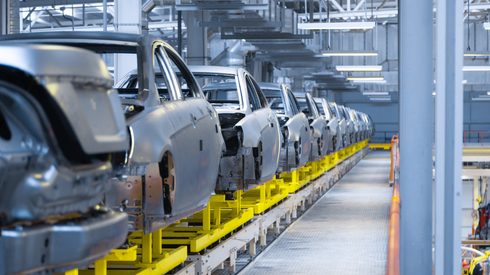“Our increased consumption of scrap and our successful use of hot-briquetted iron (HBI) in our furnaces to reduce coke rate, enhance productivity and quality, and stretch hot metal production, led to an overall reduction in carbon intensity per ton for 2021,” the report stated.
While the company’s total greenhouse gas (GHG) emissions rose slightly in 2021 over 2020, when production levels were much lower, total carbon emissions per ton of steel produced declined in 2021 over 2020 and prior years, the report noted.
Total steel production at Cleveland-Cliffs rose to 15.89 million tons in 2021 from 3.78 million tons in 2020, according to the company.
In January 2021 Cleveland-Cliffs set a goal of reducing its total GHG emissions by 30% from 2017 levels by 2030.
Scope 1 GHG measures direct emissions from sources owned or controlled by a company and Scope 2 measures emissions from purchased electricity, steam, heat and cooling.
In 2017 Cleveland-Cliffs’ combined Scope 1 and 2 GHG emissions stood at 44.1 million tonnes of carbon dioxide equivalent, falling to 39.8 million tonnes by 2019. In 2020, GHG emissions fell to 32.2 million tonnes, then rose to 34.5 million tonnes in 2021.
HBI plant
The company’s decision to build the Toledo HBI plant is a cornerstone of its carbon reduction efforts, according to the report.
HBI is used in the company’s electric-arc furnaces and blast furnaces to enhance productivity and the quality of the finished product and is seen as a scrap alternative.
From 2017 to 2021, the company invested $1 billion in the HBI plant, and during 2021 it was able to ramp up operations to achieve full production rates.
In 2021, Cleveland-Cliffs consumed 1.1 million tonnes of HBI in its operations. The HBI plant was designed with a capacity of 1.6 million tonnes a year.
Other investments
Last year the company also made a $775 million acquisition of Ferrous Processing and Trading Co and its 22 scrap processing facilities.
In total, the company has invested $2 billion in efforts that “further sustainable low-carbon intensity steelmaking,” a spokesperson told Fastmarkets on Thursday June 2.
“Another way we are taking action now is ceasing the use of pulverized coal injection (PCI) at Dearborn Works. Instead of PCI we are injecting natural gas – which has lower CO2 emissions than coal – directly into the furnace to reduce coke rates,” the spokesperson said.
The company has also completed installation and commenced operation of two new walking beam furnaces at its Burns Harbor facility. “The furnaces will improve quality and cost competitiveness, and reduce fuel consumption and associated GHG emissions,” the spokesperson said.
Imported pig iron
During the company’s first quarter earnings call on April 22, Lorenco Goncalves, chairman, president and chief executive officer of Cleveland-Cliffs, said Russia’s invasion of Crimea in 2014 revealed America’s vulnerability to imported pig iron.
The potential loss of Russian and Ukrainian pig iron for US steelmakers led Cleveland-Cliffs in 2017 to decide “to build a massive source of virgin metallics with our Toledo direct-reduction HBI plants [and] attempt to provide the US electric-arc furnace market with a more reliable and carbon-friendly source of metallics,” Goncalves said during the call.
“In the seven years following the invasion of Crimea, we were the only company to act on this potential to restore our basic metallic supply back to the United States,” the CEO said.
After Cleveland-Cliffs acquired ArcelorMittal USA and AK Steel in 2020 and became the largest flat-rolled steel producer in North America, its decision to build the Toledo plant has delivered the benefits of HBI to its own steelmaking activities, the CEO explained.
Having a reliable source of HBI has allowed Cleveland-Cliffs to reduce its blast furnace footprint from eight to seven units, while maintaining a similar level of steel production.
The company’s use of HBI, combined with its reliance on natural gas, reduced the cost of HBI for Cleveland-Cliffs to just over $200 a ton compared with a $1,000 per ton price tag for imported pig iron.
Cleveland-Cliffs’ lower metallics cost gives it a competitive advantage over steelmakers who continue to rely on imported pig iron to produce steel, Goncalves said.





